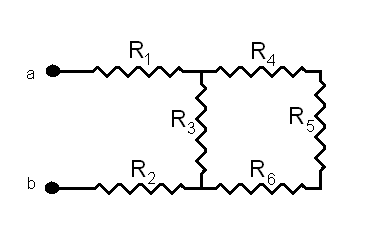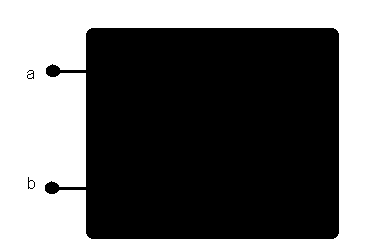John C. Baez's Blog, page 82
January 27, 2015
Trends in Reaction Network Theory
For those who have been following the posts on reaction networks, this workshop should be interesting! I hope to see you there.
• Workshop on Mathematical Trends in Reaction Network Theory, 1-3 July 2015, Department of Mathematical Sciences, University of Copenhagen. Organized by Elisenda Feliu and Carsten Wiuf.
Description
This workshop focuses on current and new trends in mathematical reaction network theory, which we consider broadly to be the theory describing the behaviour of systems of (b...
January 4, 2015
Why Google Gave Up
I was disappointed when Google gave up. In 2007, the company announced a bold initiative to fight global warming:
Google’s Goal: Renewable Energy Cheaper than CoalCreates renewable energy R&D group and supports breakthrough technologies
Mountain View, Calif. (November 27, 2007) – Google (NASDAQ: GOOG) today announced a new strategic initiative to develop electricity from renewable energy sources that will be cheaper than electricity produced from coal. The newly created initiative, known as...
November 28, 2014
Networks in Climate Science
What follows is draft of a talk I’ll be giving at the Neural Information Processing Seminar on December 10th. The actual talk may contain more stuff—for example, more work that Dara Shayda has done. But I’d love comments now, so I’m posting this now and hoping you can help out.
Preliminary throat-clearing
I’m very flattered to be invited to speak here. I was probably invited because of my abstract mathematical work on networks and category theory. But when I got the invitation, instead of tal...
November 14, 2014
A Second Law for Open Markov Processes
guest post by Blake Pollard
What comes to mind when you hear the term ‘random process’? Do you think of Brownian motion? Do you think of particles hopping around? Do you think of a drunkard staggering home?
Today I’m going to tell you about a version of the drunkard’s walk with a few modifications. Firstly, we don’t have just one drunkard: we can have any positive real number of drunkards. Secondly, our drunkards have no memory; where they go next doesn’t depend on where they’ve been. Thirdly,...
November 4, 2014
Network Theory Seminar (Part 4)
Since I was in Banff, my student Franciscus Rebro took over this week and explained more about cospan categories. These are a tool for constructing categories where the morphisms are networks such as electrical circuit diagrams, signal flow diagrams, Markov processes and the like. For some more details see:
• John Baez and Brendan Fong, A compositional framework for passive linear networks.
Cospan categories are really best thought of as bicategories, and Franciscus gets into this aspect too.
 ...
...
November 3, 2014
Network Theory (Part 33)
Last time I came close to describing the ‘black box functor’, which takes an electrical circuit made of resistors

and sends it to its behavior as viewed from outside. From outside, all you can see is the relation between currents and potentials at the ‘terminals’—the little bits of wire that poke out of the black box:

I came close to defining the black box functor, but I didn’t quite make it! This time let’s finish the job.
The categories in question
The black box functor

goes from the category...
October 29, 2014
Sensing and Acting Under Information Constraints
I’m having a great time at a workshop on Biological and Bio-Inspired Information Theory in Banff, Canada. You can see videos of the talks online. There have been lots of good talks so far, but this one really blew my mind:
• Naftali Tishby, Sensing and acting under information constraints—a principled approach to biology and intelligence, 28 October 2014.

Tishby’s talk wasn’t easy for me to follow—he assumed you already knew rate-distortion theory and the Bellman equation, and I didn’t—but it w...
October 27, 2014
Biodiversity, Entropy and Thermodynamics

I’m giving a short 30-minute talk at a workshop on Biological and Bio-Inspired Information Theory at the Banff International Research Institute. I’ll say more about the workshop later, but here’s my talk:
• Biodiversity, entropy and thermodynamics.
Most of the people at this workshop study neurobiology and cell signalling, not evolutionary game theory or biodiversity. So, the talk is just a quick intro to some things we’ve seen before here. Starting from scratch, I derive the Lotka–Volterra eq...
October 21, 2014
Network Theory Seminar (Part 3)
This time we use the principle of minimum power to determine what a circuit made of resistors actually does. Its ‘behavior’ is described by a functor sending circuits to linear relations between the potentials and currents at the input and output terminals. We call this the ‘black box’ functor, since it takes a circuit:

and puts a metaphorical ‘black box’ around it:

hiding the circuit’s internal details and letting us see only how it acts as viewed ‘from outside’.
For more, see the lecture notes...
October 20, 2014
Network Theory (Part 32)
Okay, today we will look at the ‘black box functor’ for circuits made of resistors. Very roughly, this takes a circuit made of resistors with some inputs and outputs:

and puts a ‘black box’ around it:

forgetting the internal details of the circuit and remembering only how the it behaves as viewed from outside. As viewed from outside, all the circuit does is define a relation between the potentials and currents at the inputs and outputs. We call this relation the circuit’s behavior. Lots of diff...
John C. Baez's Blog
- John C. Baez's profile
- 29 followers



